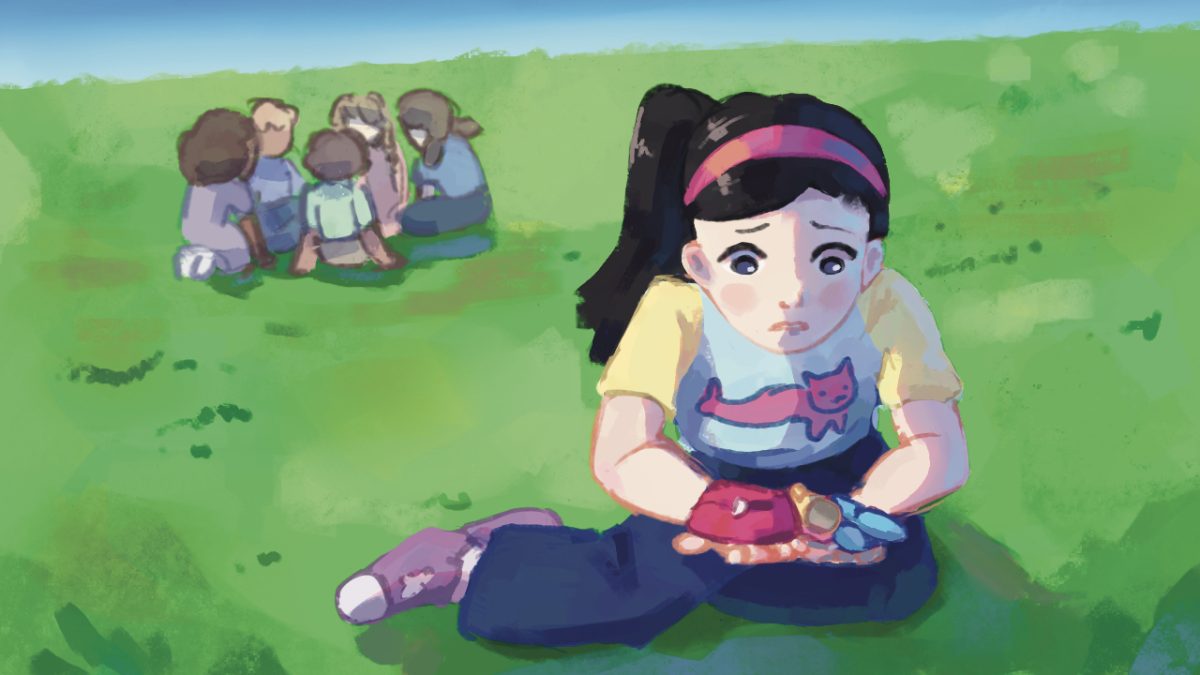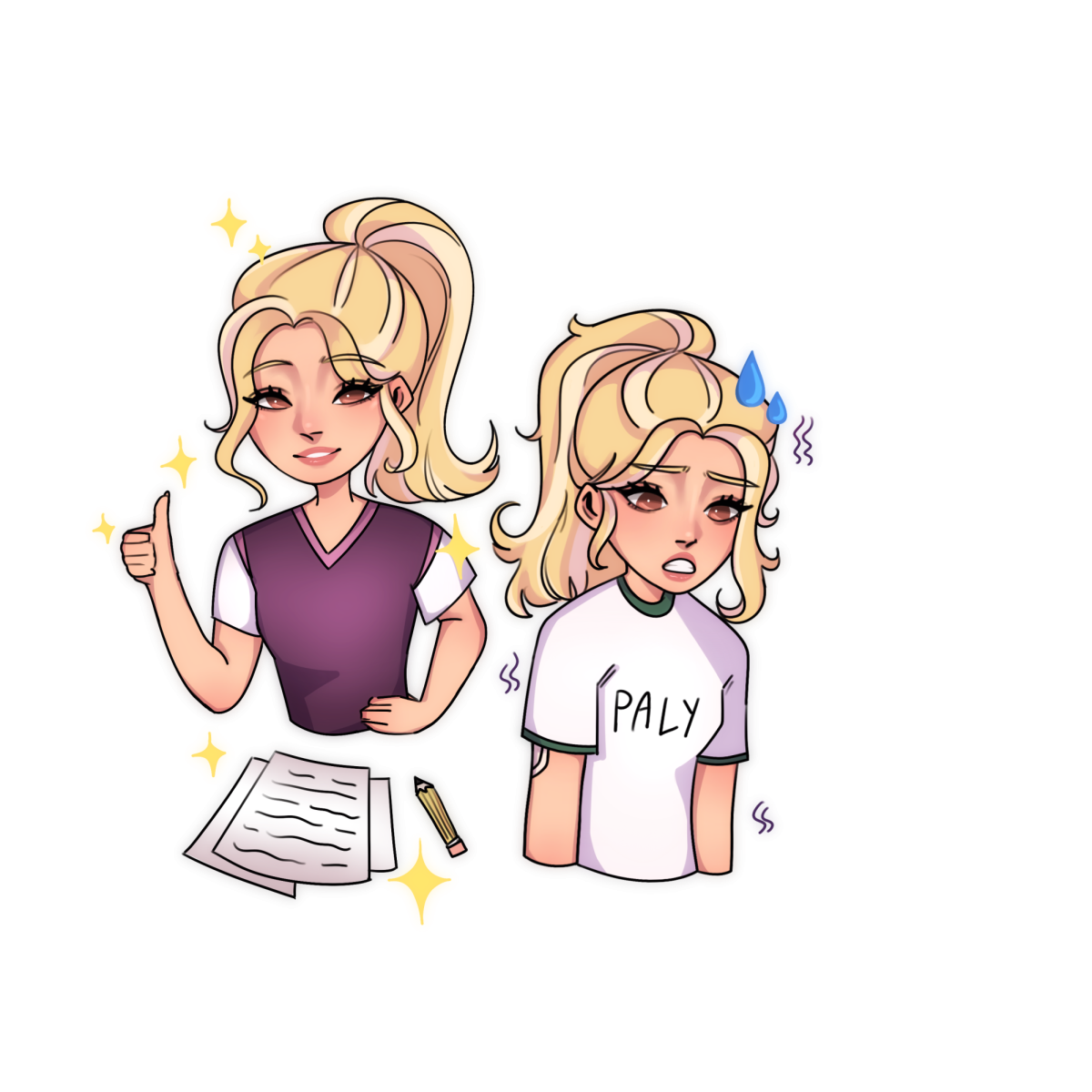To prepare for a test, Paly Human Anatomy and Physiology teacher Randy Scilingo goes about his classroom setting up 3-D models.
On various features of the ulna, layers of the abdominal muscles and neural foramen of the spinal vertebrae, Scilingo intricately places colored stickers, which will serve as questions. Students will need to recall many different types of muscles and bones all throughout the body while also citing their functions and properties — a difficult task for most.
Although the Human Anatomy and Physiology course has only been around for one year, it is already popular, with Scilingo teaching two classes, each with a blend of honors and regular lane students.
Scilingo, who began teaching at Paly last year, was shocked to learn that such a college-driven school did not yet have a curriculum for the course, and introduced it to administrators.
“When I got here, I was like, ‘There’s no Anatomy here?’So I had to start it. It’s really weird with so many kids in this school going into medicine and STEM that you wouldn’t have Anatomy, so that’s a slam dunk. There was obviously a need — and that’s my spiritual side: God put me here in this place for some reason with this timing. My life has been that way.”
Randy Scilingo
Scilingo’s Human Anatomy and Physiology class fills the University of California general education requirements as a college-preparatory elective.
The class is organized into nine units, each with course manuals consisting of handouts and homework.
Throughout the anatomy sections of the course, Scilingo said he introduces college-level practical exams, which involve questions regarding various photographs, microscope slides, diagrams and 3D models, influenced by Scilingo’s own Human Anatomy course taken at the California Polytechnic University.
The only differences in the honors versus the non-honors credit lies in the amount of information given to the students during an exam.
In April 2019, Scilingo succeeded in having the class fulfill college requirements, as certified by Foothill College.
“Ms. Chute told me, ‘Hey, would you be interested in getting dual credit for the class?’ And I was like, ‘You can do that?’” Scilingo said. “She knew it was a challenging and rigorous class, (since) I went through and got it approved at the district level and at the Paly site level, and I was like, ‘This is basically college-level Anatomy.’”
According to math teacher Deanna Chute, Scilingo’s class readily met the Foothill course requirements.
“For a course to be a dual enrollment course on this campus, it has to be aligned with a Foothill course, which is determined by Foothill.”
Deanna Chute
The teacher has to also meet the minimum qualifications from the community college to teach that course.
Approval of a course is departmentalized at Foothill; every department goes through their own process.
According to Chute, Scilingo’s course is completely synchronized with courses at Foothill. However, this is not always the case; with other courses, there’s more negotiation required.
To start the process of dual enrollment, Scilingo had to work with the Foothill College anatomy department and demonstrate the intensive rigor in the curriculum that would prove it to be college level.
“They believed it would align with their courses and what they taught, so at that point I had to start the application process,” Scilingo said. “Like resumes, cover letters, as if I’m getting hired by them. Then, they came here actually, and saw the lab.”
Scilingo’s class setup made a positive impression, according to Chute. After receiving good word about his curriculum, Scilingo had to proceed to the next step.
The next step consisted of filling out an application for becoming a Foothill instructor, according to Scilingo. Once he completed the application and delivered it to the Anatomy department, he received his hypothetical place as an instructor on behalf of Foothill College teaching at Paly, and Human Anatomy and Physiology now would account for two college classes, one class being the entry level and the second being more advanced than the first.
“I don’t want to get into the payment, but Scilingo is a PAUSD employee,” Chute said. “He is not paid by Foothill, but he is employed by Foothill in a sense that he goes through approval.”
For many students, dual enrollment poses a new opportunity for exploration.
“I think it’s great that there’s one less class I’d have to take for college. I think it is helpful in allowing us to advance and learn at a college level, and also allowing us to explore different classes in college early on.”
Sky Croce
Chute, who is a leader in this process at Paly, said dual enrollment is a newer, advancing aspect of Paly curriculum.
“(Early Childhood Development teacher) Hillary McDaniel was at the forefront of this a few years ago,” Chute said. “She did a lot of reaching out to Foothill before we even had systems in place here in the District Office. I started to get involved and I reached out to Scilingo and other teachers.”
Chute wishes to continue developing this addition to Paly classes, hoping it will become more common in the years to come.
“For me, this is a very exciting frontier,” Chute said. “The idea is to expose kids to college level curriculum in high school. The other ones I’ve been working on have been largely Career and Technical Education (CTE) classes. To take some of these practical, career-oriented classes and make those college level is really great for a lot of students.”








